Contents
- History
- Modes of Transport
- Train and Rail Systems
- Overview of Bus Networks
- Autos & Shared Vehicles
- Traffic Map
- Communication Networks
- Newspapers & Magazines
- What’s on the Billboards? A Look at Jalna’s Hoardings
- Posts & Inland Letters
- Graphs
- Road Safety and Violations
- A. Cases of Road Safety Violations
- B. Fines Collected from Road Safety Violations
- C. Vehicles involved in Road Accidents
- D. Age Groups of People Involved in Road Accidents
- E. Reported Road Accidents
- F. Type of Road Accidents
- G. Reported Injuries and Fatalities due to Road Accidents
- H. Injuries and Deaths by Type of Road
- I. Reported Road Accidents by Month
- J. Injuries and Deaths from Road Accidents (Time of Day)
- Transport Infrastructure
- A. Household Access to Transportation Assets
- B. Length of Roads
- C. Material of Roads
- Bus Transport
- A. Number of Buses
- B. Number of Bus Routes
- C. Length of Bus Routes
- D. Average Length of Bus Routes
- E. Daily Average Number of Passengers on Buses
- F. Revenue from Transportation
- G. Average Earnings per Passenger
- Communication and Media
- A. Household Access to Communication Assets
- B. Newspaper and Magazines Published
- C. Composition of Publication Frequencies
- Sources
JALNA
Transport & Communication
Last updated on 6 November 2025. Help us improve the information on this page by clicking on suggest edits or writing to us.
Jalna district historically has many areas, such as Bhokardan, which were positioned along ancient trade routes, pointing to long-established patterns of movement and exchange. Over time, the district has witnessed significant infrastructure development to support both intra-city movement and regional connectivity. Today, it is connected by rail, bus, and auto-rickshaws, with the availability and reach of these systems offering a glimpse into its evolving landscape.
History
In earlier times, Jalna was home to many historical centres of trade and settlement. One such site is Bhokardan, located in the northern part of the district has long been identified as a site of historical significance. Its name is traditionally associated with a local ruler, Bhogvardhan or Bhagdnath, though little is known about him. Interestingly, literary references and archaeological evidence suggest that Bhokardan once rivalled major urban centres like Paithan and Ter in importance in the earlier days.
It is believed to have flourished during the Satavahana period. Archaeological excavations near the town, first recorded by M. N. Deshpande in 1958 and later jointly undertaken by Nagpur University and Marathwada University in 1973–74, revealed two prominent mounds and a range of artefacts pointing towards continuous occupation here during the Satavahana period.
Many of the artefacts recovered from the site also point to Bhokardan’s former prosperity and far-reaching connections. Among the most notable is an intricately carved ivory figurine of a Devi. Scholars have drawn comparisons between this object and the so-called “Pompeii Lakshmi,” an ivory statuette of a Devi discovered in the Roman city of Pompeii, which was buried during the eruption of Mount Vesuvius in 79 CE. The resemblance has led to the hypothesis that ivory artefacts from Bhokardan may have reached Roman markets via ancient trade routes, whether overland or maritime.
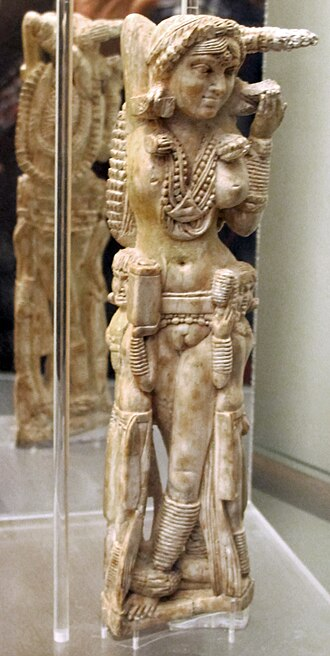
Historian Upinder Singh (2016) writes that Bhokardan was located on the trade route from Ujjayini (present Madhya Pradesh) to Paithan, the then capital city of the Satavahanas. Bhokardan flourished as a hub for ivory artefacts, intricately crafted and traded for various goods. However, with the decline of the Satavahana dynasty, the town is also said to have gradually lost its status as a major trade centre.
Artefacts from the site, including the ivory figurine, are currently housed in the History Museum of the Department of History and Ancient Indian Culture at Dr. Babasaheb Ambedkar Marathwada University in Chhatrapati Sambhaji Nagar.
Modes of Transport
Train and Rail Systems
Jalna district is served by the South Central Railway (SCR) zone, falling under the Nanded railway division. The primary railway line passing through the district is the Manmad–Secunderabad route, originally constructed during the Nizam’s era. Jalna station is the chief railhead in the district and lies on this corridor, connecting it with cities such as Hyderabad, Mumbai, Nagpur, and Nanded.
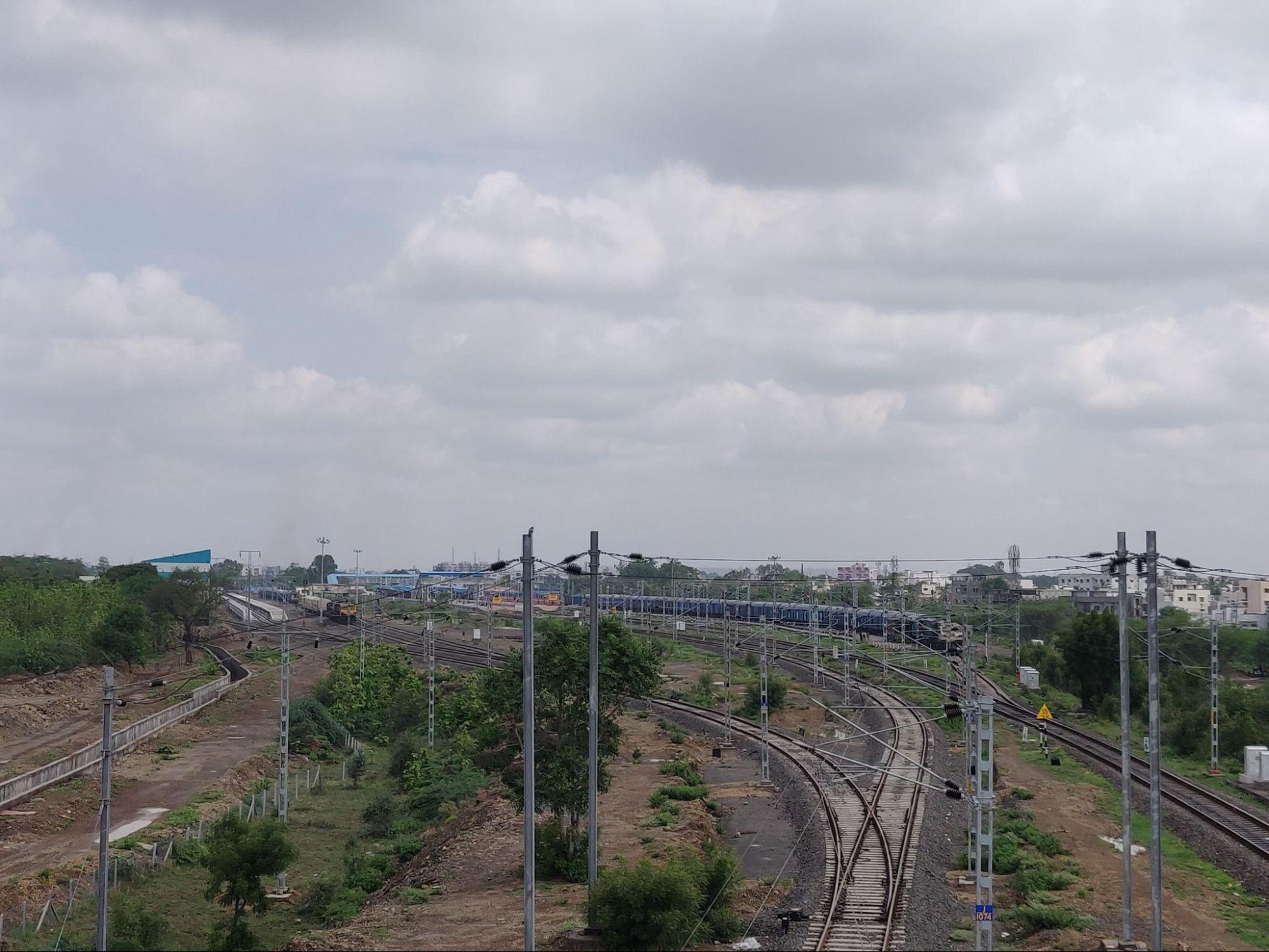
The line is now broad gauge and electrified, yet locals say that its overall alignment and infrastructure have seen limited expansion since Independence. As of 2024, proposals under the Amrit Bharat Station Scheme have included plans for the redevelopment of Jalna station to improve facilities and handling capacity. Additionally, Jalna has been earmarked as a node in the proposed Mumbai–Nagpur High-Speed Rail corridor, although progress on this remains in the planning phase.
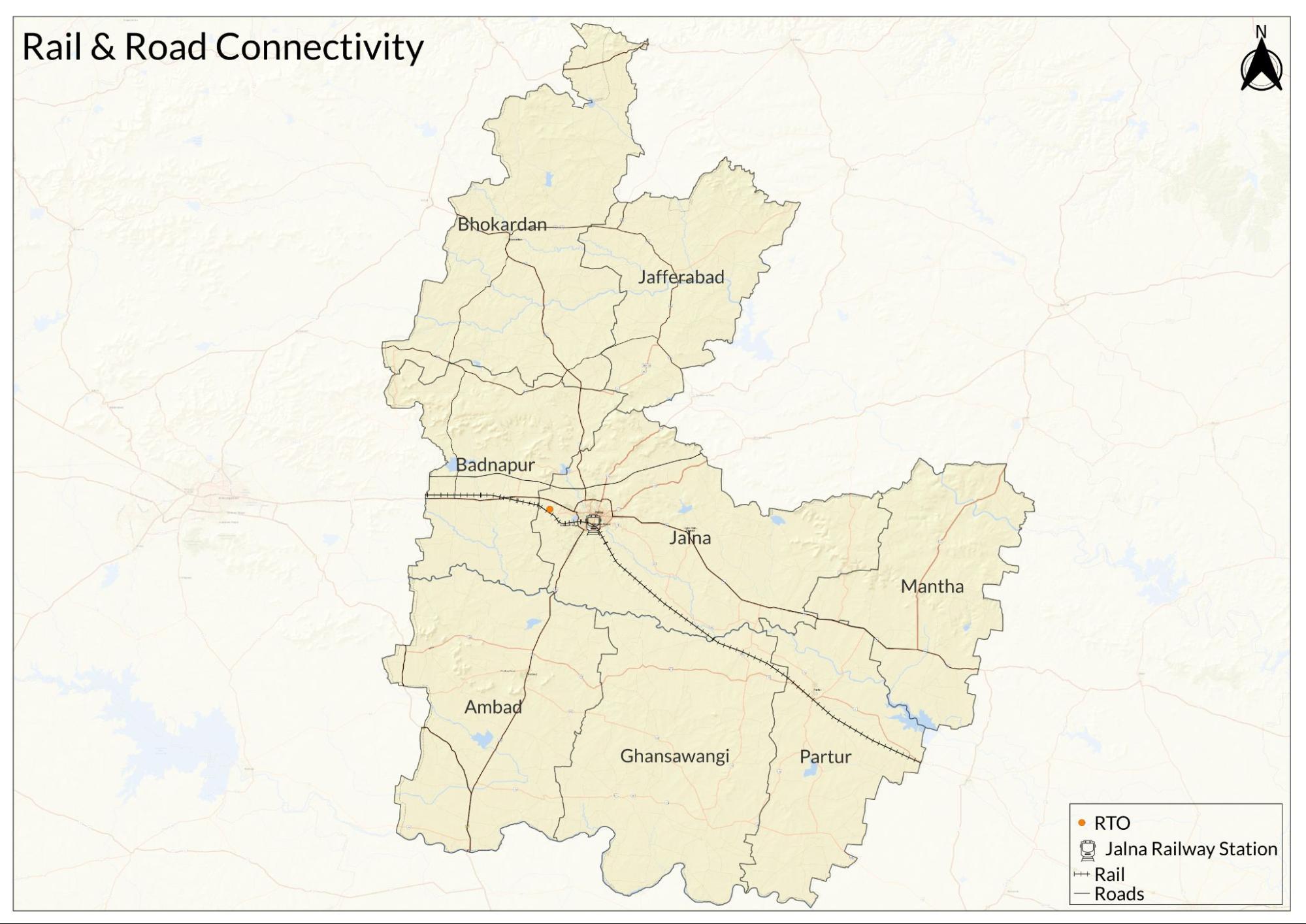
Overview of Bus Networks
Inter-district passenger transport is primarily facilitated by the Maharashtra State Road Transport Corporation (MSRTC), which operates from key depots located at Jalna, Partur, Ambad, and Mantha. These services include both express and ordinary buses. Private operators also run long-distance sleeper and luxury buses from Jalna city.
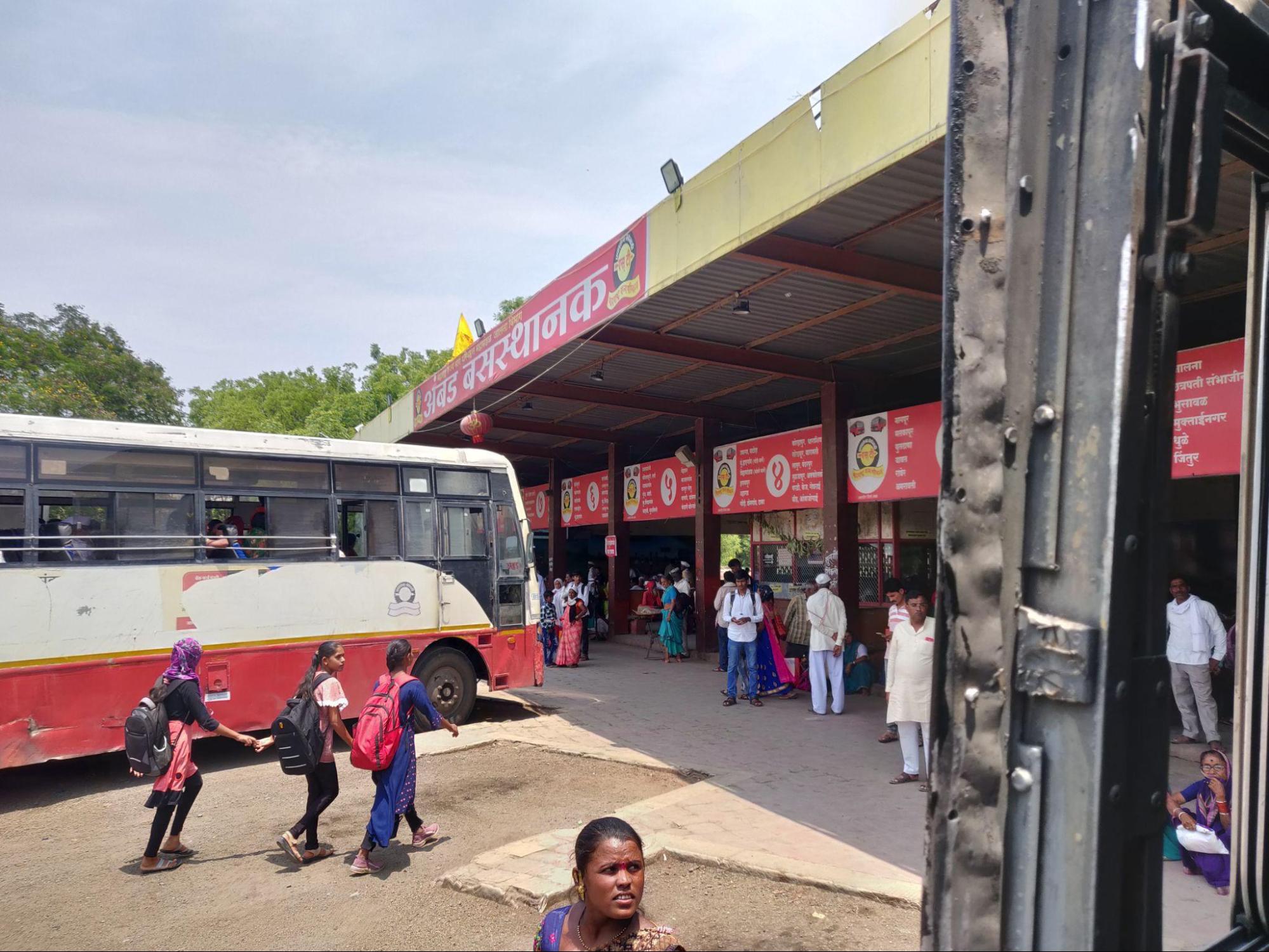
Within the district, however, locals report that public bus transport remains limited. There is no formal municipal bus service operating within Jalna city or its smaller towns. Consequently, short-distance travel relies heavily on private auto-rickshaws and shared vehicles. In places without direct bus routes, private vans and jeeps offer informal connections between villages and taluka headquarters.
Autos & Shared Vehicles
As mentioned above, daily transport within Jalna district largely depends on informal and semi-formal modes such as auto-rickshaws, vans, and shared jeeps. These services operate both within towns and across short inter-village routes, forming the backbone of local mobility.
Locals say that auto-rickshaws are the most common means of transport in Jalna town and other taluka centres. Fares are generally negotiated rather than metered. Drivers often cite the impracticality of meter-based pricing in smaller towns, where minimum fares would exceed what most passengers are willing to pay for short trips. Instead, fixed fare arrangements, often informal but commonly understood, govern pricing. For example, short-distance rides within 1 km typically cost ₹10, while distances of 4 to 5 km may cost ₹25 to ₹30. Daily commutes within town limits generally remain under ₹50, depending on fuel prices. For travel between villages and towns, shared vans and jeeps are also frequently used.
Traffic Map
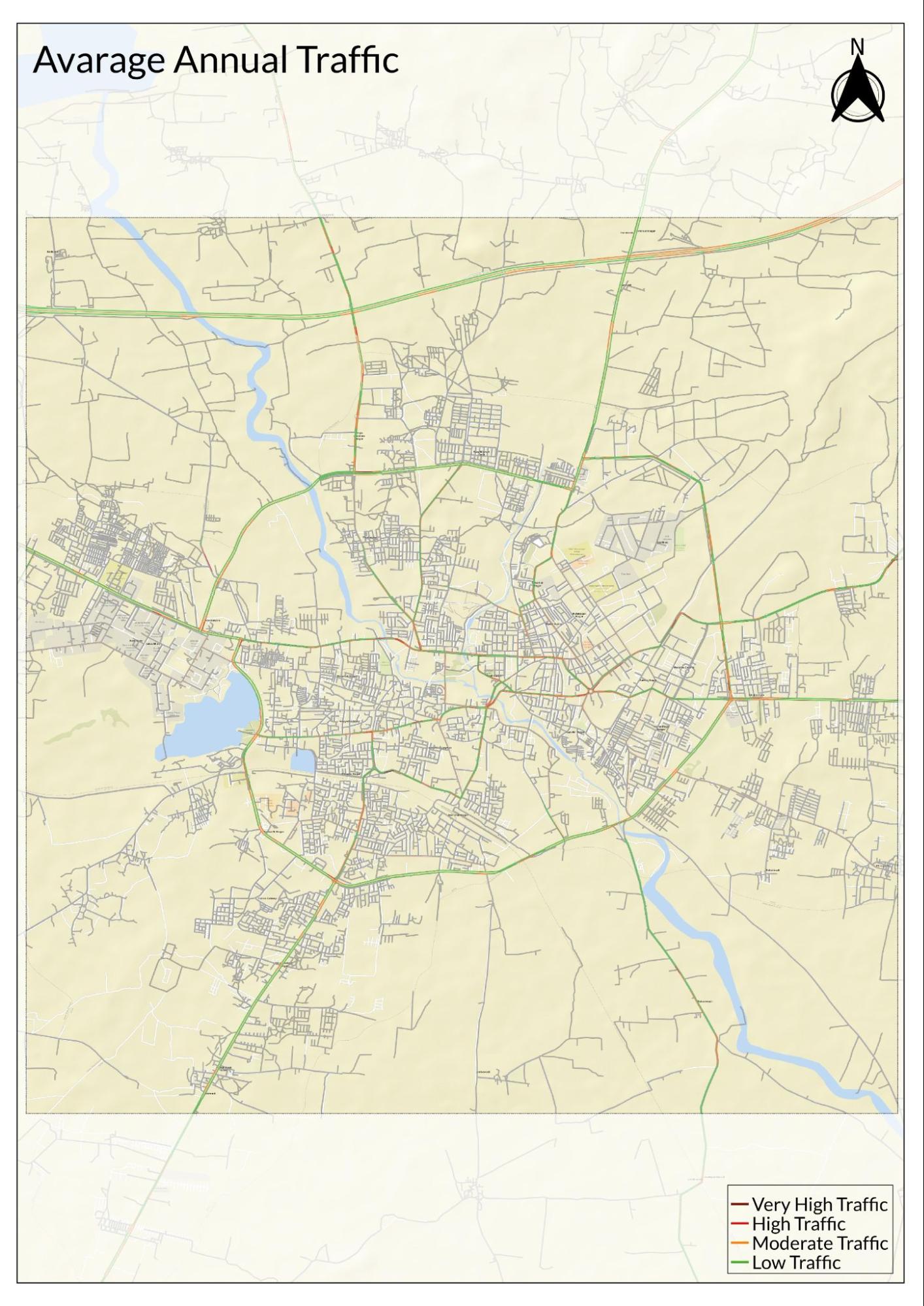
Communication Networks
Newspapers & Magazines
The media landscape in Jalna district, locals say, consists mainly of three types of newspapers: local publications, newspapers shared between Sambhaji Nagar and Jalna, and state-level dailies. Historically, Jalna was part of Sambhaji Nagar, which is why some papers, such as Badalta Maharashtra, continue to serve readers in both districts.
Local newspapers play a vital role in covering events and issues relevant to villages, towns, and the wider district. Some of the leading local newspapers in Jalna include Nayak, Krushnaniti, Ramvichar, and Parshvabhumi.

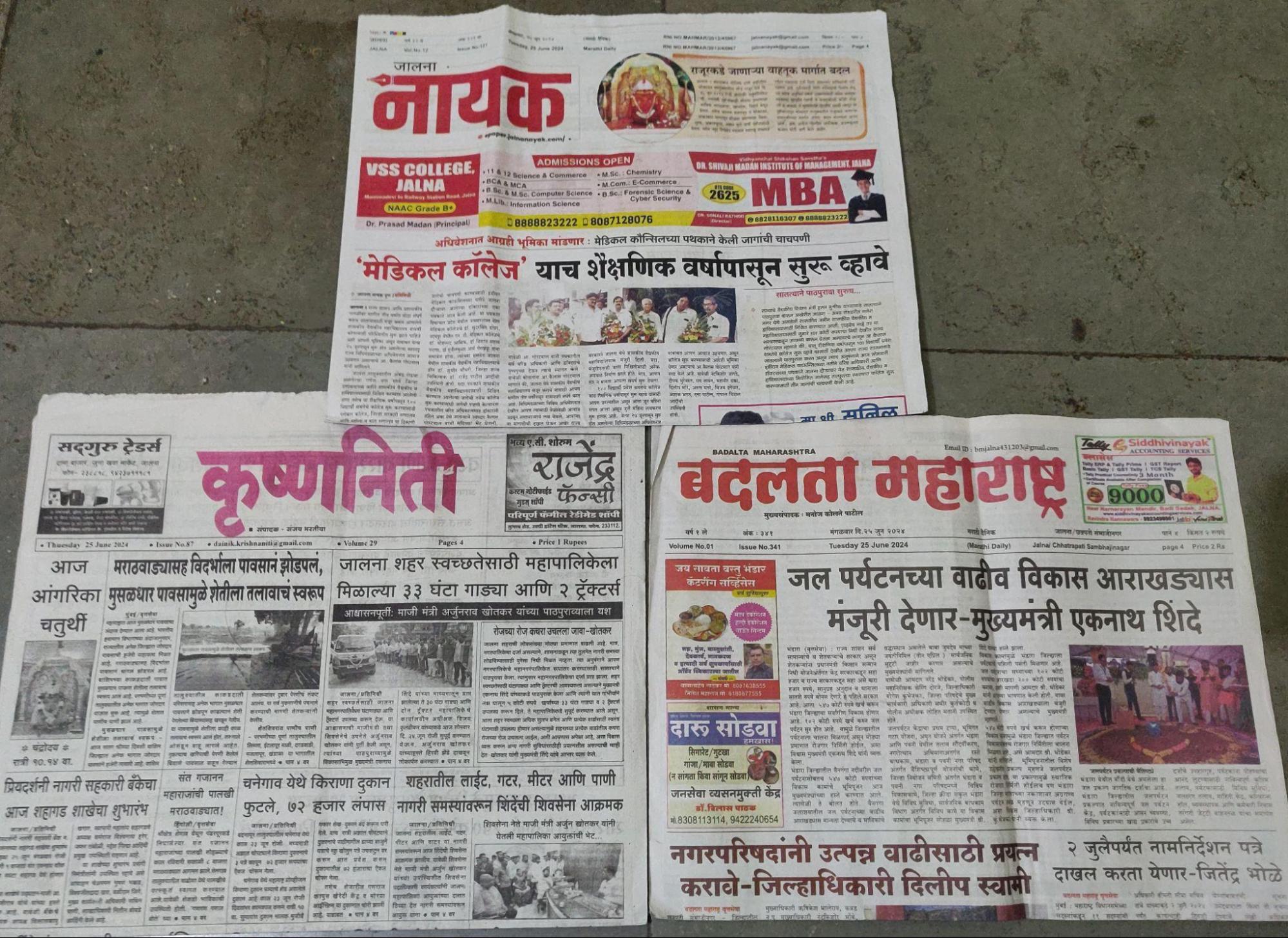
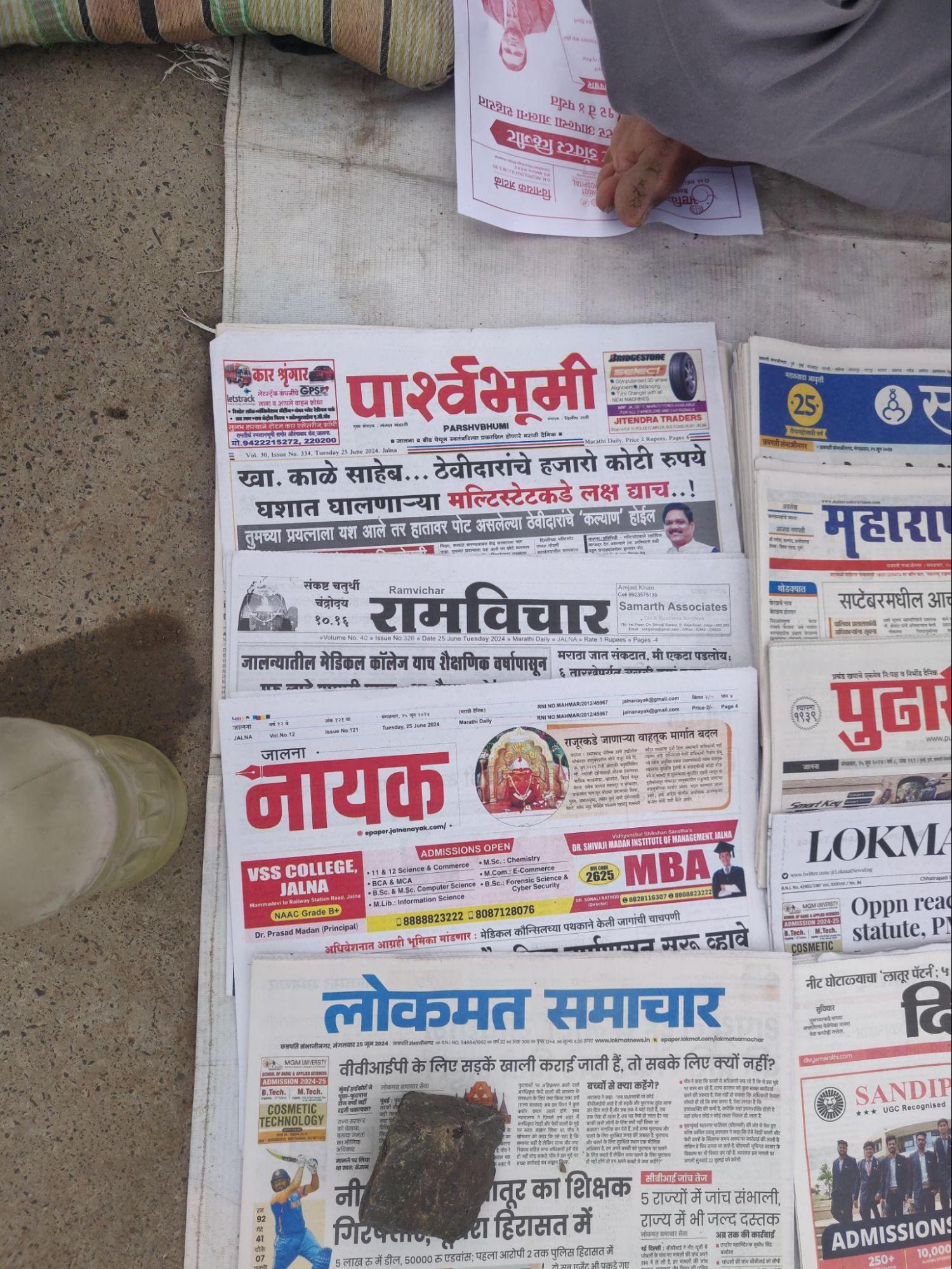
What’s on the Billboards? A Look at Jalna’s Hoardings
In Jalna’s chowks and intersections, locals say hoardings are primarily political in nature, commemorating party leaders, historical figures, or local electoral victories. Advertisements for commercial brands are relatively uncommon in public spaces.
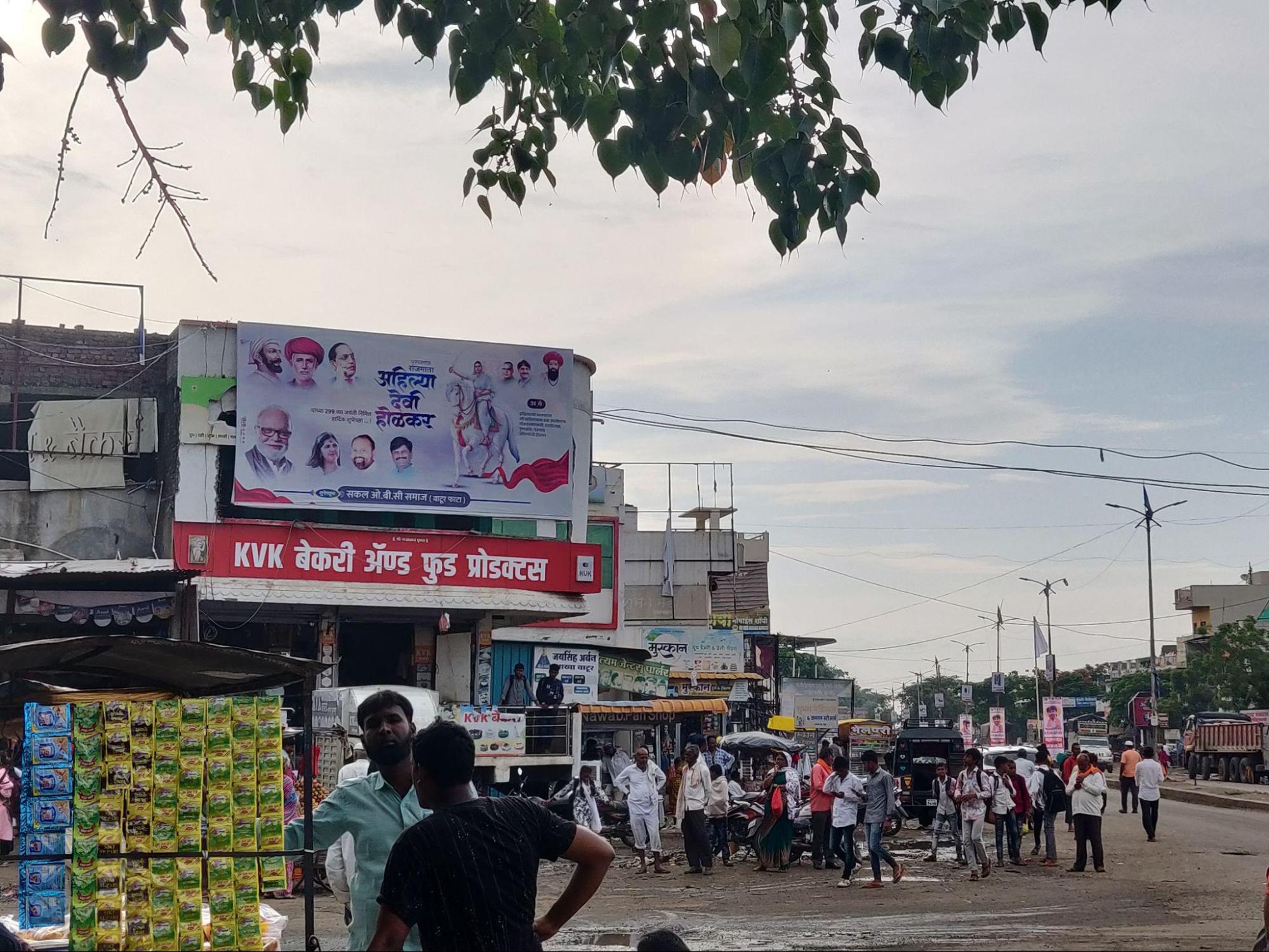
However, in some areas, the presence of political hoardings has declined, partly attributed to local discontent following recent unrest around reservation demands. Strikingly, in several villages, residents have installed signboards at entry points barring the entry of politicians altogether.
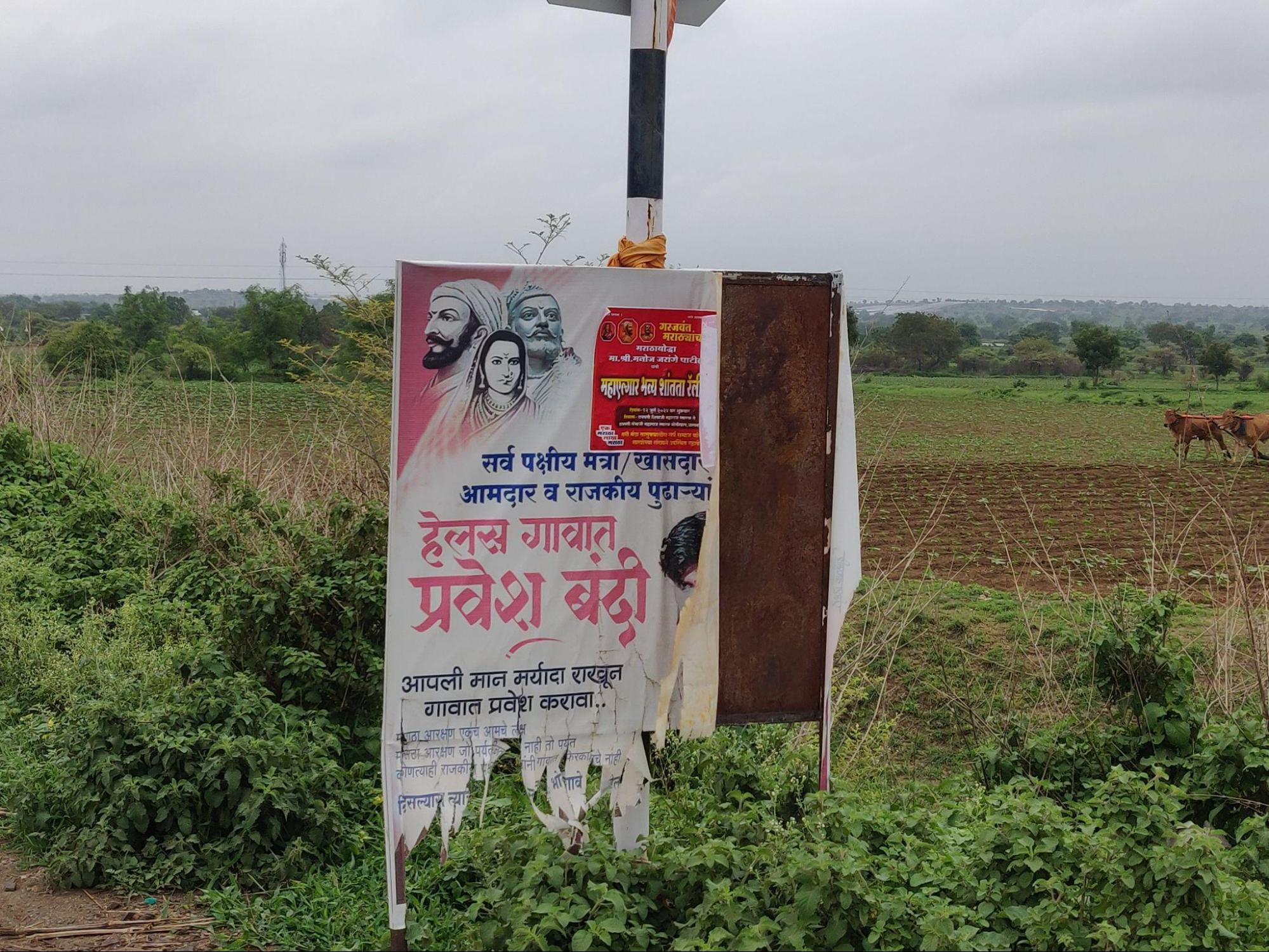
Posts & Inland Letters
Postal infrastructure remains active in Jalna, though traditional inland letters have declined with the expansion of digital communication. According to local postal staff, services such as speed post have seen increased usage.
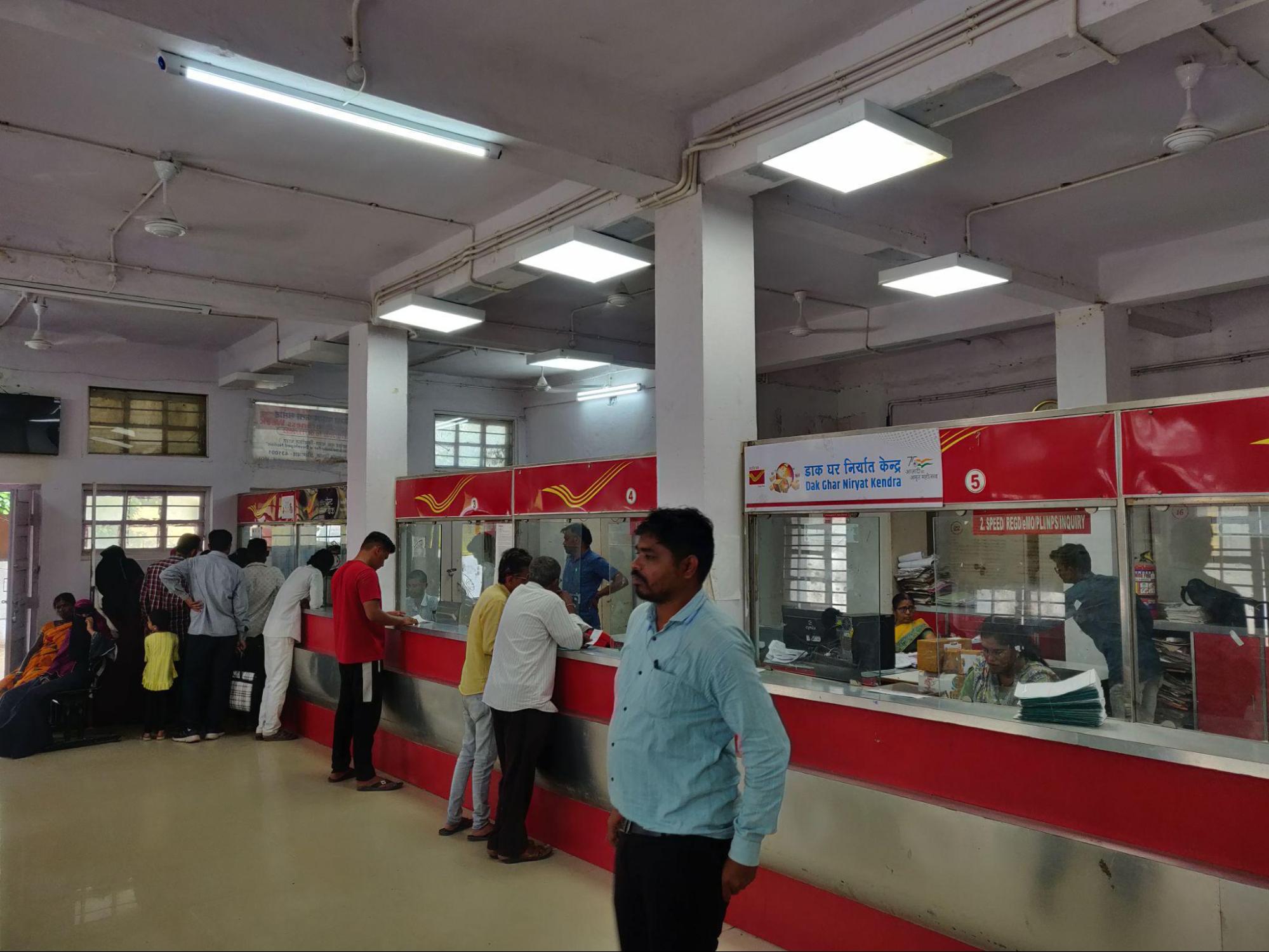
Savings activity through post offices has also witnessed a rise. This trend is shaped by two factors: growing distrust of private banking institutions following fraud incidents, and the continued integration of state and central government welfare schemes with the postal network. For many residents, especially in rural areas, post offices are viewed as secure channels for savings and benefit disbursal, despite offering lower interest rates than private banks.

Graphs
Road Safety and Violations
Transport Infrastructure
Bus Transport
Communication and Media
Sources
FE Online. 2024. Railways Amrit Bharat Scheme: Ministry of Railways reveals progress of Jalna Station Redevelopment. Financial Expresshttps://www.financialexpress.com/business/ra…
The Metro Rail Guy. Mumbai – Nagpur High Speed Rail Information.https://themetrorailguy.com/nhsrcl-mumbai-na…
Upinder Singh. 2016. A History of Ancient and Early Medieval India: From the Stone Age to the 12th Century: From Stone Age to the 12th Century.Pearson, UP.https://tehattagovtcollege.ac.in/Pdf/Resourc…
Wikipedia Contributors. Bhokardan. https://en.wikipedia.org/wiki/Bhokardanhttps://en.wikipedia.org/wiki/Bhokardan
World Health Organization. Road Safety. WHO, Geneva.https://www.who.int/health-topics/road-safet…
Last updated on 6 November 2025. Help us improve the information on this page by clicking on suggest edits or writing to us.